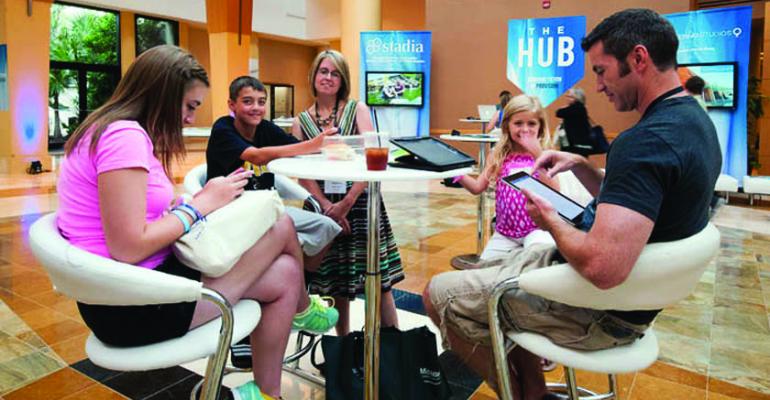How do you maximize your event's sponsorship potential? Donna Kastner, a content marketing maven at Enlighten 123 who previously served as director, expo/sponsor sales and activation,Velvet Chainsaw Consulting Inc., said during a session at an ASAE annual meeting, “Ultimately, it’s about bigger deals with fewer buyers. It’s about segmentation, discovery, and organizing around your best customers and their goals, not your products.”
According to a study conducted by IEG, North American sponsors spent around $21 billion in event sponsorship in 2015 (the majority of which goes into sports sponsorships, with a tiny percentage going into association conferences and shows). Traditionally, in the event world, according to the Center for Exhibition Industry Research, 85 percent of a sponsor’s spend goes toward the booth, and 15 percent to sponsorships.
That needs to change, according to the presenters. “There should be less toward the booth, more toward sponsorship,” said Velvet Chainsaw Consulting Inc. Managing Director Dave Lutz. “We believe floor plans are going to shrink. The spend will not necessarily decrease, but you’ll need to capture that spend for other more strategic investment.”
Here are seven of their top tips, based around promoting, selling, and delivering sponsorships:
1. Streamline your sponsorship menu.
Likening the “Cheesecake Factory” restaurant menu to sponsorship menus, Kastner said there is often a paradox of choice: too many menu items, which can delay decision-making. If you’ve been to a Cheesecake Factory restaurant, you know the menu is on at least a dozen pages in a spiral-bound notebook. “I take forever to decide between four or five items, but usually end up ordering the lettuce leaves,” she said. So streamline your sponsorship options.
2. Go for quality over quantity.
If you offer too many things, your quality suffers and you might confuse the buyer. Sticking with the food theme, Lutz said that “Restaurant Impossible,” a reality show on the Food Network, brings home this lesson every week: When you offer too many things on your menu, your quality suffers. “Scarcity is really good for sales,” added Lutz.
3. Be the attendee.
Scan your sponsored elements to make sure everything you offer gives the attendees value and enhances their experience. Lutz and Kastner offered real-time examples to ASAE attendees and asked them to vote on what sponsorships they got value from: advertising via a “wrap” on a bus? Ad inserts in a registration bag at a meeting that called itself “green”? A learning journal that offers blank pages for attendees’ notes? A free breakfast in bed sponsored by a destination’s convention and visitors bureau? A lounge that offered a free photographer to take professional head shots? A logo on a key card?
Envision yourself as an attendee at your own event: What is giving the most value? Give your sponsors opportunities that you know will pay off for them, said Kastner.
4. Go beyond the logo.
Download the white paper “Last Generation Sponsorship,” by Kim Skildum-Reid of Power Sponsorship. Skildum-Reid writes that it’s no longer, “If you love the event, you should love our brand.” Or “Pay attention to us (and our logos)!” Rather, your guiding principle should be, “We know you love this event—we love it too, and we’ve thought of a few ways to make it better for you.”
5. Use sponsors to resolve attendee complaints!
Your—and your sponsors’—main focus should be on the attendee experience. Do attendees complain about lack of Wi-Fi in the building? If so, offer a sponsorship for Wi-Fi for the attendees. “Figure out the attendee’s pain points and figure out how you can eliminate them. And have those sponsored!” Are people waiting around for the general session? Have something to entertain them while they’re waiting, and have that sponsored.
6. Match sponsors to your objectives.
Sort your objectives into buckets such as thought leadership, education, and attendee experience, and pair those with your sponsors. Provide exclusive VIP opportunities for your biggest sponsors. Stay away from “pay to play” demos on the exhibit hall floor. One great example of enhancing an attendee’s experience was the exhibit at ASAE’s expo hall sponsored by Hard Rock Meetigs & Events. It offered charging stations at its booth for any device, and tweeted about it. What a great way to chat up the attendees and potential buyers, said Lutz. If you have a sponsorship item that you’re not sure you should keep or get rid of, bundle it, added Lutz.
7. Use your leadership for sales.
Everybody needs to be in sales, said Lutz, sourcing Daniel H. Pink’s book, “To Sell Is Human: The Surprising Truth About Moving Others.” A good sponsorship sales team needs to know how to be consultative, he added, and an association’s leadership needs to be involved in extending its relationships with top companies to sales. “We find it is almost impossible to outsource sponsorship sales,” said Lutz.
For much more on sales, activation after the sponsorship deal is done, and other valuable insights, visit Midcourse Corrections, the online home and blog of Velvet Chainsaw Consulting Inc. or on Facebook.
Note: This article was originally published August 2013.




